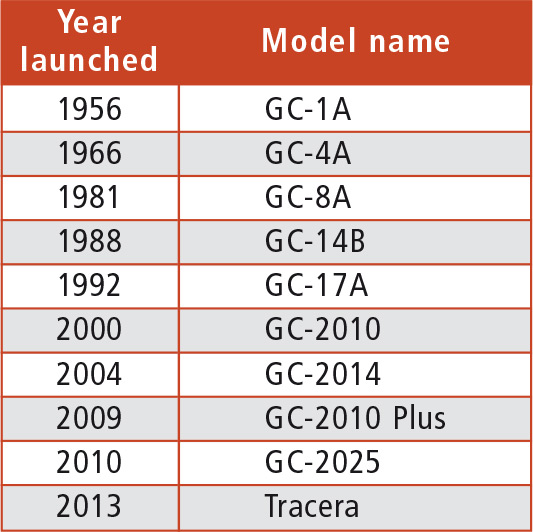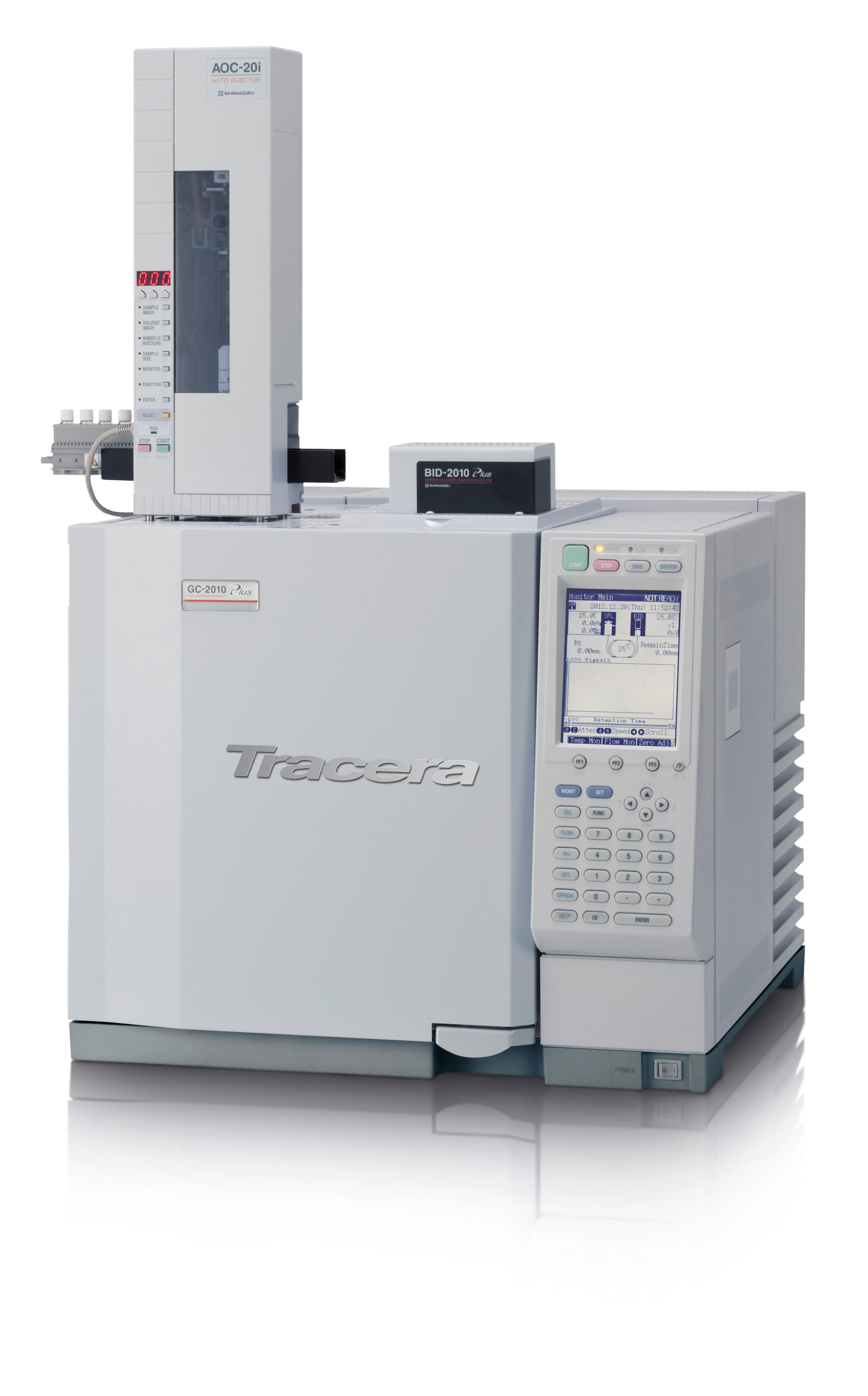GC pioneers of the first hour
60 years of gas chromatography

With its 120 kg, the GC-1A could have been named a ‘Sumo wrestler’ among GCs. Everything, from sample introduction, separation, detection up to chromatogram evaluation, was included within a single structural framework.
The GC-1A was Japan’s first gas chromatograph; it was developed by Shimadzu in 1956, only four years after the British scientist A.J. Martin was awarded the Nobel Prize for his groundbreaking research on gas chromatography, which he utilized together with his colleague A.T. James.
With the GC-1A, Shimadzu pushed forward the legacy of its founder family. Genzo Shimadzu Junior, the second-generation company leader, was one of the 10 most important inventors of Japan and was honored by the emperor at that time. In 2016, Shimadzu celebrates its 60th GC anniversary. Within the 141 years of Shimadzu’s company history, chromatography paved the way and has set numerous milestones that today have become technical standards and serve consumer protection, environmental protection and product safety.
Major analytical technology
Since its commercial introduction, gas chromatography has evolved into a major analytical technology. Today, tens of thousands of GC systems are in use in all areas of industrial and pharmaceutical research and development, in basic research, environmental research, and in quality control. The separation of complex mixtures as well as the identification and quantification of the individual components is still considered to be one of the most important tasks in instrumental analysis.
“Contributing to society through science and technology” is Shimadzu’s core philosophy. This also includes the continuous development of existing technologies, exploring possibilities and pushing existing technical boundaries. This has made Shimadzu a market leader and an established name in science and industry.
GC milestones: hardware and software, central systems, detectors and accessories
Much of what has been technically established in GC today has often been achieved through hardware and software milestones. Between the first GC-1A and the current ultra-modern, universal Tracera system with its novel BID (barrier ionization discharge) detector that can detect all substances except for helium and neon, there have been numerous world premieres, advances in performance and innovations that have set technical and economic trends and standards.
 Table 1: History of Shimadzu gas chromatography systems
Table 1: History of Shimadzu gas chromatography systems
- With the GC-3A series, Shimadzu introduced the first mini GC, as a development result of downsizing instruments.
- The GC-4A marks the step from isothermal to temperature-programmed chromatography, which allows the separation of complex mixtures of substances in significantly less time. The GC-4A, for the first time, implements the patented dual-flow operation of two packed columns.
- Automated chromatogram evaluation starts with the C-1A integrator.
- The GC-8A is the first asbestos-free GC system. In combination with the AOC-8A autosampler, automated measurement of sample sequences is possible.
- The GC-9A and -14B mark the triumph of capillary versus packed column chromatography. Now, it is possible to achieve separations of complex mixtures with improved resolution and within a much shorter time.
- The GC-9A is the first gas chromatograph coupled to a mass spectrometer. In addition to quantitative evaluation, the mass spectrometer allows for the identification of unknown sample components and leads to new scientific findings in environmental, pharmaceutical and materials research.
- With the GC-17A, gas pressures and flows are now electronically adjustable and can be modified via flow and pressure programs.
- The GC-2010 has set a long-term standard with respect to detection limits. Its outstanding reproducibility remains undefeated until today.
- The LabSolutions software with self-explanatory operation of the GC controls and novel diagnostics functions, make gas chromatography accessible to all users.
- The GC-2014 and GC-2025 models for routine analyses are reliable and robust as well as extremely cost-effective. The GC-2025 is the first system manufactured from RoHs-compatible components and is fully recyclable.
- The most recent development is the Tracera with its novel BID detector – the innovative technology for the helium plasma generation combines sensitivity with so far unrivalled robustness and long-term stability, opening up entirely new possibilities in trace analysis.
 Tracera combines the GC-2010 Plus with a BID detector
Tracera combines the GC-2010 Plus with a BID detector
Wide range of GC systems
Today, routine as well as high-end systems determine Shimadzu’s product range – from small and versatile through ultra-sensitive and highly productive systems up to instruments that break new technological grounds, for example the multiple heart-cut technology.

Numerous detectors complete the picture, including new and advanced technologies such as the BID helium ionization detector. System solutions, e.g. detector-switching or splitting, backflushing or autosamplers offer users customized as well as flexible application possibilities.
Shimadzu’s 60 years of GC development stands for the company’s ambition to continuously broaden the horizon for GC analysis with innovative and novel developments.
Further information on this article
www.shimadzu.eu/60-years-gc